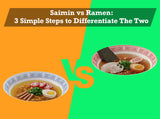
Uji matcha is named after the city in which it is grown in: Uji City (宇治市).
Uji City is located between the two ancient capitals of Kyoto and Nara.
The combination of soil and atmosphere in this area make it a prime location for the growth and harvest of shade-grown tea leaves,
Which is then used to make matcha powder.
Are you curious as to what matcha really is?

Keep reading and you will find out…
1. Must know basics of matcha
2. Matcha food you will appreciate
3. The actual way to tell what good matcha is
4. Unknown types of matcha
5. The exact way to take care of your matcha
6. Matcha troubleshooting

1. Must know basics of matcha
Hello from Kyoto, Japan!
Kyoto, the beautiful ancient capital of Japan, is recognized for its classical and traditional ancient shrines and many World Heritage sites.
The breathtaking views of this city is best enjoyed with a cup of Kyoto-famous Uji matcha!
Walking down the streets of Kyoto, you'll be greeted by vendors offering a variety of delicious and interesting uji matcha-flavored foods.
From matcha ice-cream, cookies, parfaits to even matcha-flavored soba.

i. What Is Matcha?
Matcha looks like this…

It is fine ground powder of green tea leaves.
You feel a sense of content when you drink it.
Important:
You can make matcha powder only from special green tea leaves called tencha.

ii. What is tencha then?
Tencha is a tea leaf that is harvested in a special way.
In order to make tencha, you need to cover the tea plants for more than 20 days before picking up the tea leaves.
Yes, you read right.
During this period, if you go into a tea plantation, you can see bamboo blinds on tea plants.
Do you know why?
Because…
The important characteristic of matcha is having umami rather than bitterness.

Let me explain...
The tea plant that is in the shade tries to grow quickly to get sunlight.
It means the plant uses its energy to grow its own stems and not to thicken its leaves.
So the leaves get really thin and soft.
These thin and soft parts are really important since they contain a lot of umami.
If tea leaves start photosynthesising, they turn umami elements called theanine into catechin and tannin.
They make your tea bitter, so you don’t want them.

That is why you want to cover the tea plant.
I don’t know how people found out about this process that makes your matcha better,
But I always have admiration for the people in the past who put a lot of effort into finding out ways to better their way of life.
After picking up the tea leaves, you dry them without rolling.
Then get rid of stems and leaf veins.
These are the processes of making tencha.

iii. Nutrition and benefit Health Benefits
Tea has a lot of benefits that will delight you.
Matcha is even better because you can consume the tea leaf itself.

If you aren't already drinking matcha, here are 5 reasons why you should start now:
1. High in Antioxidants:
Matcha is packed with antioxidants.
They contain a type of potent antioxidant called EGCG (epigallocatechin gallate) that has cancer-fighting properties.
2. Weight Loss:
Matcha has properties that boost metabolism and burn fat.
It doesn't contain any calories and even helps burn them. Win-win!
3. Relaxes Your Mind:
茶道 or The Way of Tea was traditionally an art of relaxation and meditation.
Matcha is very rich in a certain amino acid called L-theanine.
This helps reduce stress and enhance the state of relaxation.
4. Helps Cognitive Function:
Matcha has been proven to improve memory, increase reaction times and improve attention and concentration
5. Protects the Heart:
Antioxidants, which matcha is packed with, have properties that help decrease several heart-related diseases.

2. Matcha food you will appreciate
Matcha is used in different kinds of food especially in sweets.
Do you know why?
Because when you eat something creamy, you also want to have something a little bit bitter with it...
Like a cup of coffee.
The bitter taste of matcha enhances your sweets.
This is how matcha makes you happy.

Also you tend to like food that has this characteristic below:
People like...
Tastes that are familiar + new tastes.
Because you get cautious about the food that is completely new to you.
You will get confused and then you feel it doesn’t taste good.
But food like matcha can easily add on to your sweets, bread, and noodle dishes.
These are reasons why matcha has been popular lately.
Here are some examples of matcha foods…
i. Matcha parfait
In Kyoto, there are a lot of matcha sweets.
But the No. 1 matcha sweet is the matcha parfait.
The light bitterness of tea within the sweetness of your dessert makes your parfait really tasty.
ii. Matcha shaved ice
It is a classic flavor of shaved ice in Japan.
Matcha shaved ice is still popular even today.
There are some sweetened red beans, rice flour dumplings, and condensed milk on it.
After trying it for the first time, you will long for it all the time.
iii. Matcha softserve
Softserve that has a matcha taste…
Tea leaves go well with milk products.
They bring you a sense of satisfaction.

ix. Cha soba (Green Tea Soba Noodles)
Cha Soba is made of soba flour and matcha powder.
Noodles have a beautiful green color.
Do you think these green noodles are strange?
They have a unique flavor of soba and matcha combined.
x. Matcha Bread
The taste of matcha enhances your bread too.
Matcha toast will be a new favorite on your breakfast menu.

3. The actual way to tell what good matcha is
Are you uncertain about what good matcha is?
Good matcha has to have umami and sweetness rather than bitterness.
This is the outcome of covering tea plants before picking the leaves up.
There are three elements to a good matcha.

Fertilization is one of them.
Because umami from matcha comes from the soil.

Another important element is how you cover the plants.
It is really important when you start using the covers.
It depends on the weather of the year.
This process prevents the leaves from turning bitter.
The other important element is when you pick the leaves up.
If you pick the leaves too early, the leaves won’t have enough umami.
But if you wait too long then the leaves get hard.
It means the flavor of matcha won’t be good.
Now you can confidently appreciate your matcha...

4. Unknown types of matcha
There are some kinds of matcha powder for drinking at a tea ceremony, at a cafe, or using for food.
You need to pick a specific one based on your usage.
i. Drinking matcha tea
There are two kinds of matcha.
Koicha and usucha.
They are both enjoyed at a tea ceremony, but they have their own roles.
Koicha is considered a main and usucha is a side or simplified version.
Koicha has a darkish deep green color.
Koi means thick in Japanese.
It only exists for tea ceremony.
You can appreciate the umami of tea so koicha shouldn’t have a strong betterness.
It means the powder of koicha must be high end.
Usucha has a bright blue green color.
Usu means thin in Japanese.
You can find this type of green tea other than at a tea ceremony like at a cafe.
Thickness of koicha and usucha is different.
You use 3 times more matcha powder for koicha.
ii. When to use matcha powder for your cooking or baking…
Probably you want to use matcha that has a bright green color in order to make your food beautiful.
Especially for cookies because the color tends to be dull after you bake them.
I recommend using matcha powder for baking.

5. The exact way to take care of your matcha
Matcha can last a long time if you treat it right.
Even though the ingredients of matcha are natural.
But you still need to be very kind and gentle to your matcha.

i. Why matcha powder gets bad
Matcha is a very sensitive material.
It gets bad easily because of the light, smells, high temperature, and high humidity.
Matcha easily fades when there is a light.
It easily catches other food smells.
If it is in a high temperature or a room with high humidity, the flavor of the matcha will be ruined and will have an aged smell.
The color will turn into a reddish brown.
You will feel a sense of deep regret if this happens to your matcha.

Good news:
ii. There are right ways to store matcha to keep it fresh
Tip No. 1 You may want to consider storing your unopened packed matcha in your fridge or freezer.
So you can avoid high temperatures.
Tip No. 2 Open your matcha packaging in room temperature.
If you open the packaging while it is cold, it attracts moisture in the air and you will ruin the taste and flavor.
Tip No. 3 Once you open the package, remember to seal your matcha powder in an airtight bag before putting it back into the fridge.
If you have a food vacuum sealer, use it to get rid of the air.
If you don’t have a sealer, put the powder into a plastic bag and seal it. And then seal it again in another plastic bag.
Doing so can also help prevent your matcha powder from getting food smells from the fridge.

6. Matcha troubleshooting
i. Clumping
Matcha is a very fine powder.
Because of that, it easily makes lumps by its own weight or static.
If there are lumps in the matcha powder, it remains in your drink even when you mix it with your matcha whisk.
You will feel washed up when it happens.

When you make pastries, it is difficult to mix with other ingredients.
Then do you know how to get rid of lumps?
Use a fine strainer to get rid of them.
You will get a very nice smooth matcha again.

ii. Fading green color
The green color becomes dim by light.
Since matcha is made of all natural ingredients, the green goes away within a short period of time.
Did you know?
Matcha cakes in the showcase at a cake shop lose their color if they are there for too long.
If you want to keep them green, you need to put them in a dark room.
If you are a matcha lover this is the perfect set for you.
This beautiful set comes with everything you'll need.
The bowl has a nice weight to it.
The whisk works beautifully, so your matcha will always be frothy.
You will love the quality because they are very elegant.
It makes you want to use the whole kit every day once it arrives.
It also comes in a beautiful box.
So we highly recommend it as a gift, or for yourself!
About the Author

Kei is a self-proclaimed matcha lover, blog writer and founder of "Apex S.K. Japanese tableware".



Leave a comment